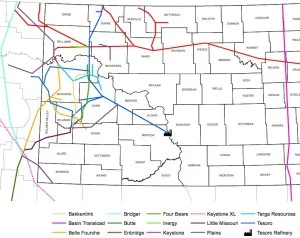As oil pipeline safety concerns escalate across the country, the U.S. Department of Transportation’s Pipeline and Hazardous Materials Safety Administration (PHMSA) is ramping up its efforts to meet the growing demand for innovation.
Related:ND Defines Stricter Rules for Pipeline Construction
In addition to hiring more that 100 new safety inspectors this year, the PHMSA will also be awarding $2 million in grants for students and faculty to research pipeline safety solutions. These grants designed to expose new engineers and scientists to the technical side of the energy transportation sector.
“We’re not simply offering grants through the CAAP; we’re demonstrating to engineering and technical students that their disciplines are in demand in the energy pipeline sector,” said PHMSA Acting Administrator Timothy Butters. “PHMSA provides safety oversight for the country’s 2.6-million-mile pipeline network, and we need out-of-the-box thinkers.”
Grant proposals will be evaluated on scientific merit, quality, management plans, work tasks, budgets and schedules. The PHMSA is specifically seeking projects that address technical gaps in the following areas:
- Preventing and Mitigating Pipeline Corrosion
- Developing Locatable Plastic Pipelines
- Developing Inspection Tools to Quantify Pipe Strength and Toughness
“U.S. Senator for North Dakota John Hoeven, commented“As we work towards building a comprehensive ‘all-of-the-above’ energy plan for our country, it’s important to ensure that we build the right kind of infrastructure to support our energy needs, now and into the future,” Hoeven said. “We must ensure that our infrastructure is reliable, safe and efficient, and this grant will enable universities to do the innovative research that will do just that.”
The debate around the safety of cruse pipelines has heated up since the shale oil boom in 2008. Most recently, President Obama delayed the Keystone pipeline when he vetoed bill saying he wants to hold off a final decision until further environmental reviews are complete.
Related: Obama Issues Keystone Pipeline Veto



